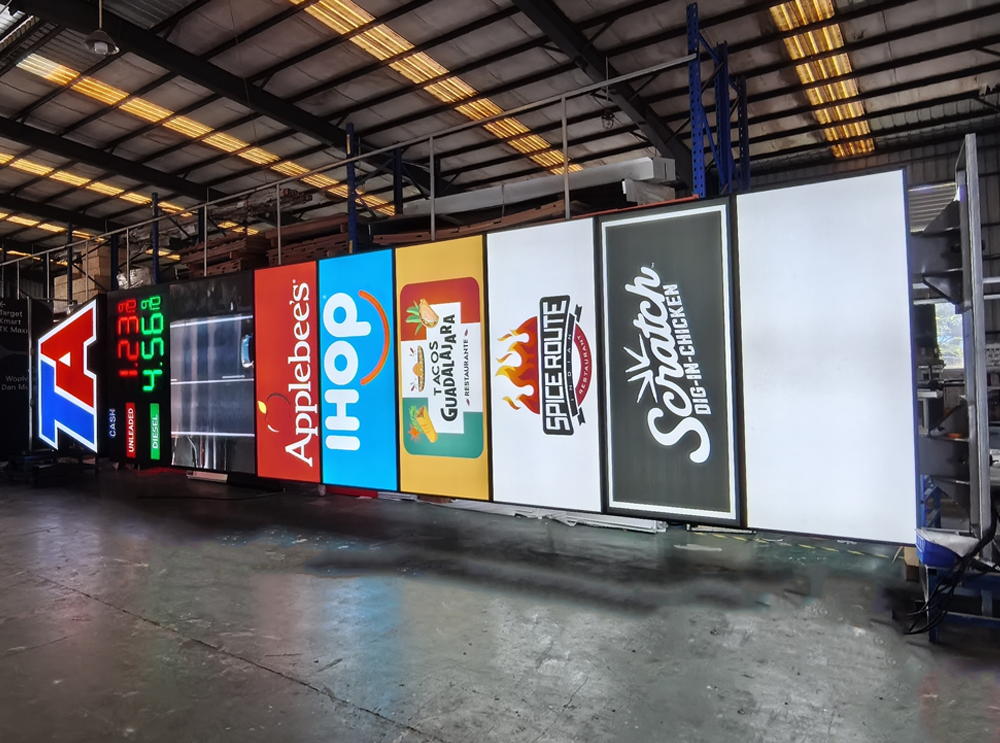Maximizing Gas Station Visibility with Strategic Signage Solutions
For small-town gas station owners, every business decision carries significant weight. One of the most impactful choices they face is whether to invest in an advertising pylon – that tall, illuminated sign structure that serves as a beacon for passing motorists. In today's competitive fuel retail market, visibility can make the difference between thriving and barely surviving. An advertising pylon represents more than just a sign; it's a long-term marketing investment that could fundamentally change a station's market presence.
The decision to install an advertising pylon requires careful consideration of various factors, from initial costs to long-term benefits. Small-town gas stations operate in unique environments where customer habits, traffic patterns, and local competition all play crucial roles in determining success. Understanding how an advertising pylon fits into this ecosystem is essential for making an informed investment decision.
Understanding the Impact of Advertising Pylons on Gas Station Performance
Visibility and Brand Recognition Benefits
An advertising pylon serves as a powerful visual anchor, particularly in small-town settings where it can become a recognizable landmark. These towering structures typically range from 20 to 50 feet in height, making them visible from considerable distances and multiple approach angles. This enhanced visibility can significantly increase spontaneous customer stops, especially from highway traffic or first-time visitors to the area.
The impact on brand recognition cannot be understated. A well-designed advertising pylon creates a professional image that builds trust with potential customers. It communicates stability and permanence, essential qualities for a gas station seeking to establish itself as a reliable community fixture. The ability to display current fuel prices clearly and prominently also helps attract price-conscious consumers who might otherwise drive past.
Traffic Flow and Customer Behavior Analysis
Research shows that drivers make fueling decisions several seconds before they need to turn into a station. An advertising pylon provides the critical advance notice needed to influence these split-second decisions. In small towns, where alternative options might be limited, being the first visible station can capture a significant portion of passing traffic.
Customer behavior patterns indicate that visibility directly correlates with stopping frequency. Stations with prominent advertising pylons often report increased customer visits, particularly during evening hours when illuminated signage becomes even more crucial. This extended visibility window effectively lengthens the daily business opportunity period.
Financial Considerations for Pylon Sign Investment
Initial Cost Analysis and ROI Projections
The investment in an advertising pylon typically ranges from $15,000 to $50,000, depending on size, features, and local installation requirements. While this represents a significant upfront cost for small-town operators, the potential return on investment must be evaluated over a 7-10 year period, the typical lifespan of a quality pylon sign.
ROI calculations should factor in both direct and indirect benefits. Direct benefits include increased fuel sales and convenience store purchases, while indirect benefits encompass reduced spending on other forms of advertising and enhanced property value. Many station owners report seeing a 15-25% increase in overall revenue after installing an effective advertising pylon.
Maintenance and Operating Costs
Ongoing expenses for an advertising pylon include electricity, periodic maintenance, and occasional repairs. LED technology has significantly reduced power consumption costs compared to traditional fluorescent systems. Annual maintenance costs typically range from 1-2% of the initial investment, covering routine inspections, cleaning, and minor repairs.
Modern pylons often incorporate energy-efficient components and durable materials that help minimize long-term operating costs. The ability to update pricing displays electronically also reduces labor costs associated with manual price changes, providing additional operational efficiencies.
Strategic Positioning and Design Considerations
Location Optimization
The effectiveness of an advertising pylon largely depends on its placement relative to traffic flow and viewing angles. Small-town stations must carefully consider factors such as approach directions, speed limits, and natural sight lines. Optimal positioning ensures maximum visibility while complying with local zoning regulations and safety requirements.
Strategic placement should account for future development plans and potential changes in traffic patterns. A well-positioned advertising pylon can maintain its effectiveness even as the surrounding area evolves, protecting the long-term value of the investment.

Design Elements and Brand Integration
Modern advertising pylons offer numerous design options that can be customized to enhance brand identity and maximize impact. Key considerations include size proportions, illumination types, color schemes, and messaging hierarchy. The design should balance attention-grabbing appeal with professional aesthetics that complement the local environment.
Integration with existing brand elements ensures consistency across all customer touchpoints. This includes matching corporate colors, logos, and typography while incorporating space for price displays and promotional messages. A cohesive design strategy strengthens brand recognition and professional appearance.
Frequently Asked Questions
How long does it take to see returns on an advertising pylon investment?
Most gas station owners report beginning to see measurable returns within 6-12 months of installation. However, the full financial impact typically becomes clear after 18-24 months, as customer awareness and behavior patterns adjust to the improved visibility.
What are the key maintenance requirements for an advertising pylon?
Regular maintenance includes cleaning the sign faces, checking electrical connections, ensuring proper illumination, and inspecting structural components. Professional inspections should be conducted annually, with routine cleaning and bulb replacement performed as needed throughout the year.
Can an advertising pylon help compete with larger chain stations?
Yes, an advertising pylon can level the playing field by providing similar visibility and professional appearance as larger competitors. It allows independent stations to effectively communicate prices and promotions, helping them maintain market share in competitive environments.

